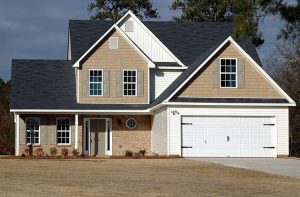 When people think of mold in homes, their minds often jump to images of old, neglected properties with leaky roofs and poor ventilation. While it’s true that older houses can be prone to mold issues, newer homes are not immune. In fact, mold can be a significant concern in any property, regardless of its age or condition.
When people think of mold in homes, their minds often jump to images of old, neglected properties with leaky roofs and poor ventilation. While it’s true that older houses can be prone to mold issues, newer homes are not immune. In fact, mold can be a significant concern in any property, regardless of its age or condition.
The Rise of Energy Efficiency and Mold Issues
One surprising reason mold is an issue in modern homes is due to improved energy efficiency. Today’s homes are designed to be airtight, keeping warm or cool air inside to save energy. However, this can also trap moisture, especially in poorly ventilated areas like basements, attics, and bathrooms. Without proper airflow, moisture from cooking, showering, or even breathing has nowhere to go, creating the perfect environment for mold growth.
New Construction Materials and Techniques
Modern building materials and construction methods can also contribute to mold problems. Many newer homes are built with materials that are more susceptible to mold, such as drywall and composite wood products. These materials can absorb moisture easily and, if not properly sealed or exposed to water, can start to harbor mold within days. Additionally, tight construction schedules can lead to homes being built quickly, sometimes trapping moisture within the structure if materials aren’t allowed to dry thoroughly.
Water Intrusion and Weather Events
Water damage remains one of the leading causes of mold in both old and new homes. Heavy rain, flooding, and leaks can happen to any house, regardless of its age. Improper grading around the property, clogged gutters, or poorly installed roofing can all result in water intrusion, leading to mold growth in areas like walls, ceilings, and crawl spaces.
Poor Ventilation and HVAC Issues
A home’s HVAC system plays a crucial role in managing indoor air quality and humidity levels. Even in newer homes, poorly designed or maintained HVAC systems can lead to uneven airflow and high humidity in certain areas. These conditions create ideal spots for mold to flourish, often going unnoticed until the problem becomes severe.
Conclusion: Mold Can Affect Any Home
Mold is not just a problem for old or poorly maintained houses. Whether you’re living in a newly built home or one with decades of history, understanding the factors that contribute to mold growth is essential. Regular inspections, proper ventilation, and addressing moisture issues promptly can help keep your home mold-free, no matter its age.








